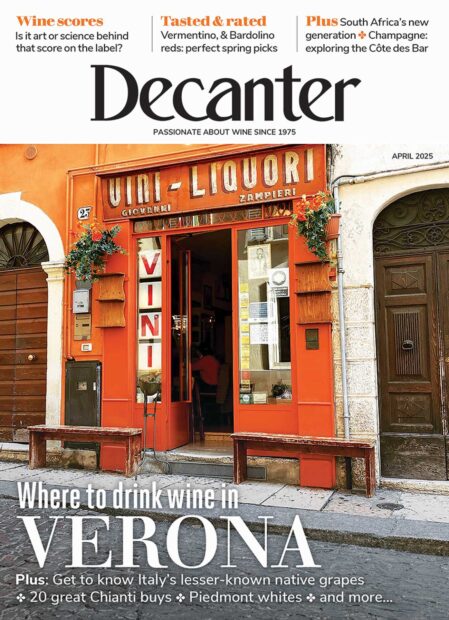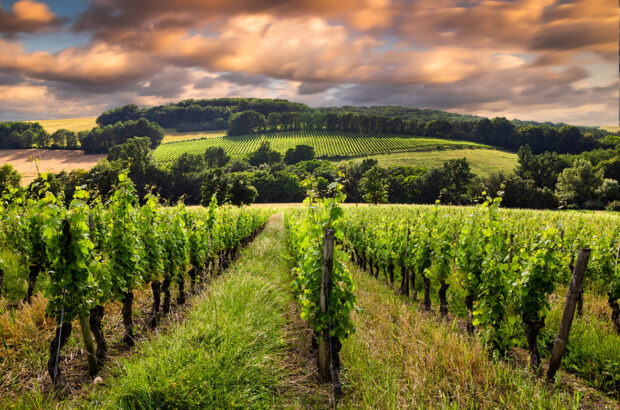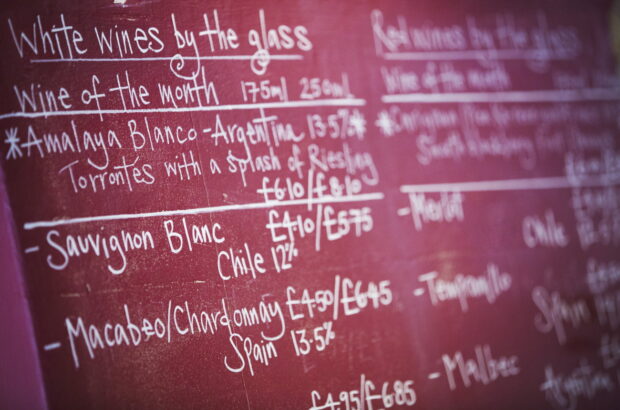Moving back from Argentina to head up two famed properties in Bordeaux, this French-born winemaker plans to let the terroir do the talking, says Jane Anson.
Audebert at a glance:
Born Toulon in 1975
Family Wife Melissende with five children aged one to 11
Educated Graduated from Ecole Nationale Supérieure Agronomique de Montpellier in 1999
Career 2000: Terrazas de Los Andes in Argentina. 2002: Moët & Chandon, Krug and Veuve Clicquot in France. 2006: Winemaking Manager Terrazas de los Andes & Cheval des Andes (one million bottles annually). 2014: moved to Bordeaux to work for Châteaux Rauzan- Ségla and Canon
Interests Horse riding and polo He says ‘Argentina is the only place on earth where they know how to cook meat properly, cooked ever so slowly over several hours so it is neither over nor underdone; just juicy perfection. That is my philosophy of wine: take the best raw materials, treat them with respect and produce something that is unforgettable.’
Interview:
We’re pretty used to winemakers establishing a name in Bordeaux and then heading off to sprinkle some magic elsewhere: Philippe Bascaules from Château Margaux to Inglenook in California; Jean-Guillaume Prats from Château Cos d’Estournel to Cloudy Bay in New Zealand; Michel Rolland from Pomerol to… the world. Less usual is for winemakers who have made serious waves overseas to be poached by Bordeaux châteaux.
So hats off to Châteaux Rauzan-Ségla and Canon, owned by luxury goods house Chanel, for securing the services of Nicolas Audebert, who first made his mark as winemaker at Krug’s Clos du Mesnil and then at Cheval des Andes in Argentina. I last visited the latter in 2006, the year Audebert arrived, when his predecessor Roberto de la Mota was in his final months before heading off to found Mendel Winery. The joint venture between Terrazas de los Andes and Cheval Blanc was already iconic, but Audebert took it to the next level, famously installing a polo field and club house looking out over the foothills of the Andes and the Cordon del Plata.
‘We had up to 70 horses there in season, and rode alongside professional polo players who spent six months of the year playing internationally and six months playing at Cheval des Andes. It was never a gimmick. We wanted an honest reflection of the Gaucho spirit of Argentina that sprung naturally from the beauty of the place itself,’ he said.
Taking the reins
Audebert, who is from Toulon in the south of France, is a polo player himself but says he is unlikely to play now he has returned home, even though he could call on the polo facilities at either Châteaux Giscours or Labégorce in Margaux – both neighbours of Rauzan-Ségla – or on those of his friend Gaëtan Charloux at Château La Cardonne in the Médoc, an ex-French national player. Chanel owners the Wertheimer family even own a stud farm in Normandy, breeding champion racehorses. ‘It would be tough to recreate the stunning grounds that we had in the Andes, and playing there was near-perfection,’ Audebert says with a smile and half-shrug that suggests he knows how to quit while he’s ahead. ‘I found my horses a good home in Argentina, and need to find something else here.’
That may be true not just for his leisure time, but in his role as director of two classified properties in Margaux and St-Emilion. After first joining the team in June 2014, he will take over officially as managing director when John Kolasa retires next year after 20 years at the helm. There seems little doubt that one of Audebert’s targets in his new role is to find the equivalent of the Cheval des Andes polo field for both Rauzan-Ségla and Canon; two châteaux that tick almost every box in the hierarchy of Bordeaux wines, and yet could still both do with an extra push into public consciousness.
Inspired by history
‘Chanel is one of the very few owners to have two equally prestigious and exciting properties on both Left and Right Banks of Bordeaux, with such a huge potential for growth,’ Audebert tells me as we sit in an upstairs room at Canon with views out over the vines. ‘After six years in Argentina I was ready for a change, and wanted it to be drastic. I considered moving to Napa but in the end turned the opportunity down. I felt in the vineyards in Mendoza that I was in the extreme wilds of nature, and for me France is at the extreme end of culture and history.
‘I had contacts in Bordeaux after working at Cheval des Andes alongside Pierre Lurton. I visited Cheval Blanc at least twice a year from Mendoza and this became my home in France. Bordeaux has a new generation of technical directors right now – Pierre Clouet at Cheval Blanc, Hélène Génin at Latour and Olivier Berrouet at Pétrus – and they all care passionately about the wine above all else. I am happy and excited to be here alongside them – and by the idea of making a wine that can transmit its history through the glass. In Argentina it was rare to drink a wine made 40 or 50 years earlier by a different set of hands, and to imagine that you are making one that will similarly stand up through the decades. Bordeaux excels at that.’
You can certainly sense the work of previous generations as you walk out into the vineyards here. Château Canon might not have the Andes outside its window, but it is on pretty much the highest spot of the St-Emilion plateau, where you can feel the earth falling away from you in gentle waves. The 18th century château is being renovated by Peter Marino, the same New York interior designer and architect who renovated Rauzan-Ségla in the 1990s (as well as, over the years, the private homes of Andy Warhol and Giorgio Armani). Surrounded by its 34ha of vines, Canon feels anchored in St-Emilion’s medieval history, offering a direct conduit to the monks, scholars, quarrymen and winemakers who built this place. It conveys this not only through its 20ha of underground cellars – once limestone quarries – but also its views over the two church spires of St-Martin de Mazerat and the Collegiate Church, and the dry stone walls that lace the top of the plateau, forming ribbons between the vines. From the gravel courtyard outside the château, it’s no exaggeration to say that you can reach out and touch the terroir that gives Canon its delicacy and finesse, both above ground and below.
Considered approach
‘John [Kolasa] has done an incredible job over the past 20 years improving the vineyards and wineries of both Canon and Rauzan,’ Audebert says as we walk among the vines under the hard October sunshine, a good week after the final Merlot and Cabernet Franc grapes have been harvested. ‘It will take time to understand where we need to go from here to keep pushing the improvements forwards.
‘Any decisions need to be authentic, rooted in a sense of place, and that takes time to uncover. But what is certain is that we need visitors to get out into the vines more. The key to understanding the wines of St-Emilion lies in its beautiful soils and its history; you can only see that outside. In Argentina I had deep wells dug in each plot and did any varietal or plot-by-plot tastings while literally standing among the soils. We need to find a similar connection to the terroir here’.
We may not see many concrete changes until the 18-month period of handover is done. Kolasa has been director of the second growth Rauzan-Ségla since 1994, when he was hired from his position as commercial director of Château Latour by Chanel, and of premier grand cru classé B Canon since 1996.
‘We have worked together since the flowering of the 2014 vintage, and split tasks between the two estates over the growing season and picking, as necessary,’ Kolasa says when he joins us later, fresh from a tasting event in New York. ‘But now harvest is over we need to get down to the more structured reality of running two large estates. Nicolas is a hugely talented winemaker and he will do great things for the properties. I learned my skills on the job, whereas he comes with a strong technical background in agronomy and engineering, which is what is needed today. The next 20 years in classified Bordeaux is going to be all about improvements in the vineyards, how to treat diseases safely, how to read the soil and give it what it needs, and how to refine and finesse our treatment of the vines to increase the precision and purity in the wine.’
‘The culture of Krug is all about precision, where the tiniest details are slowly layered one upon the other to build excellence,’ says Audebert. ‘Chanel is a company that similarly has a culture of true excellence and a commitment to creativity. And crucially both companies are able to communicate that philosophy effectively.
‘At Rauzan-Ségla and Canon we can work better with Chanel to ensure that we more effectively reflect each other’s values. I am still learning about what gives each property its personality; the velvet of Rauzan against the lace of Canon, the restrained power of Margaux against the finesse of St-Emilion. My job is first to listen to them, and then do my best to give them what they need – while understanding that creativity and breaking a few rules can be the best way to achieve brilliance.’
Fact file: Rauzan-Ségla and Canon:
- Both are Bordeaux classified estates: Rauzan-Ségla is a Margaux second growth and Canon a St-Emilion premier grand cru classé (B).
- Both have recently seen investments in the cellars and winery, as well as new vines – Rauzan-Ségla now has 74ha planted, and Canon 34ha (enlarged partly with the 2011 purchase of Château Matras, now used in the second wine Clos Canon)
- The estates are owned by Chanel, which also owns négociant company Ulysse Cazabonne. This was built up by the châteaux managing director John Kolasa while at Latour. Ulysse Cazabonne is run separately from the wine estates, headed by François Dugoua
Written by Jane Anson







